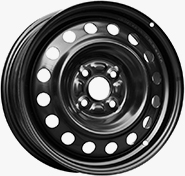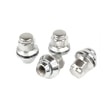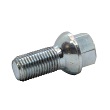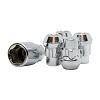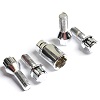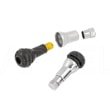Minimum tread depth. How does it affect driving safety?
Road safety is crucial for every driver. One of the fundamental factors that determine driving safety is tire condition. Proper tire tread depth significantly impacts traction, braking, and, ultimately, safety. In this article, we discuss why minimum tread depth is so important and how maintaining it properly can ensure safety on the road.
How does tread depth affect driving safety?
Proper tire tread depth directly affects a vehicle's ability to maintain traction, especially in challenging weather conditions. Tires with insufficient tread depth significantly increase the risk of skidding, aquaplaning, or longer braking times. Therefore , maintaining your tires in proper condition is crucial to ensuring safe driving . It's important to remember that proper tire tread depth is equally important for both summer and winter tires. For winter tires, including brand-name tires like Nokian winter tires , a deep tread is essential for effective snow and slush evacuation, ensuring better traction. Tires with worn tread can also negatively impact the performance of vehicle safety systems such as ABS and traction control. Therefore, the minimum tread depth should be adhered to. If the tread depth is too shallow, replacing the tires with new ones becomes necessary.
Minimum tire tread depth regulations
Many countries have regulations that strictly define the minimum tread depth. Typically, it's 1.6 mm for both summer and winter tires. This is the minimum standard that must be met for a vehicle to be considered safe and legal. However, experts often recommend replacing tires when tread depth approaches 3 mm, especially for winter tires, where traction is crucial.
How to check tire tread depth yourself?
Checking the current tread depth of your car's tires is simple and can be done yourself using a tread depth gauge or even a coin. Regular tire inspections, including brand-name tires like Michelin , are important because they allow for early detection of wear and the need for tire replacement.

The impact of worn tires on braking and traction
Worn tires significantly impact two key aspects of vehicle safety: braking and traction. When considering these factors, it's worth considering the following:
- Longer braking distances . Worn tire tread leads to longer braking distances, which can be especially dangerous in emergency situations. Studies have shown that even a small difference in tread depth can significantly impact braking distances, especially on wet or slippery surfaces.
- Reduced traction . When tire tread depth falls below the recommended value, their ability to maintain traction on the road decreases. This means the vehicle may have difficulty staying on course, especially in curves or when maneuvering. Replacing tires in this situation is the first step to improving driving safety.
- Risk of aquaplaning . Worn tires have reduced water evacuation capacity, which increases the risk of aquaplaning—a phenomenon where a tire loses contact with the road surface due to a film of water. This can lead to loss of vehicle control. Safe driving in wet weather is then impossible.
- Impact on Overall Driving Stability . Minimum tread depth, when a tire reaches it, can negatively impact overall driving stability, especially at higher speeds and in adverse weather conditions.
- Increased risk of tire blowouts . Worn tires are more susceptible to damage and blowouts, which can lead to sudden failures, especially when driving at higher speeds.
- Vehicle performance varies in different conditions . Worn tires can behave unpredictably, especially in difficult weather conditions such as rain, snow, or ice.
When should you change your tires? Tips and recommendations
The decision to replace your tires is crucial to maintaining safe driving conditions. Here are some tips and recommendations to help you understand when it's time for new tires for your car:
- Checking tread depth . As mentioned, the minimum tread depth in most countries is 1.6 mm. However, for optimal safety, it is recommended to replace your tires when the tread depth approaches 3 mm. Regularly checking your tread can help you detect the need for replacement sooner.
- Pay attention to the age of your tires . Tires wear out not only with driving but also over time. It's recommended to replace your tires every 5-6 years, regardless of their visual condition.
- Monitor for signs of wear and damage . Tire replacement is necessary when you notice visible signs of wear, such as cracks, pitting, blisters on the tire sidewalls, or uneven tread wear. Such damage can significantly impact driving safety and, in extreme cases, cause collisions and accidents.
- Respond to changes in vehicle behavior . If you notice your vehicle responding differently to your steering, for example, becoming less stable while driving, this may be a sign that your tire traction is decreasing.
- Adjust your tires to the season . Changing to seasonal tires (summer and winter) is important to ensure adequate traction in various weather conditions.
- Consider reputable tire brands . Investing in high-quality tires like Goodyear tires can result in better traction and longer life.
Remember that the minimum tread depth of your tires directly impacts driving safety. Regularly inspecting your tires, keeping them in good condition, and replacing them when necessary significantly contribute to safe driving. By keeping these tips in mind, you can not only increase your safety on the road but also avoid many problems.

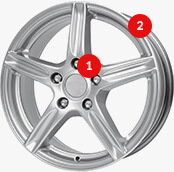

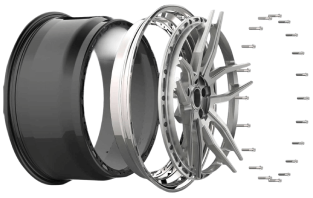
 Modern design
Modern design Perfect fit
Perfect fit High durability
High durability Free shipping within 24 hours
Free shipping within 24 hours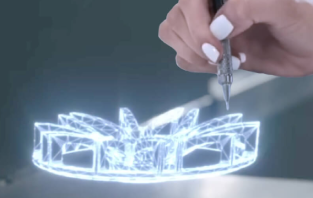
 Individual project
Individual project Dedicated caregiver
Dedicated caregiver